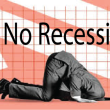by Jason Xavier, Franklin Templeton Investments
What a year!
I can still recall how this time last year I was preparing to leave my office in London as the UK government announced its first nationwide lockdown due to the spread of a mysterious new virus. Our optimistic thoughts of ‘see you in a few months’ as we elbowed colleagues on the way out were clearly naïve.
A year on, we are still meeting via Zoom in our home offices, bedrooms, hallways and kitchens, and preparing lunch at home. However, optimism is strong that an end is near, as we slowly reopen economies around the world and successfully vaccinate populations.
Much has changed over the last 12 months, not least the acceleration for many sectors in embracing a new digital age. Technology and its ability to now allow a permanent change to the working practises for many has created much-welcome balance as well as an opportunity for many businesses to optimise their real estate.
For many sectors, the global pandemic has accelerated trends that were already taking place. A company’s ability to harness strategies and products to help leverage the changes resulting from the pandemic is key to strong and sustainable future business longevity. The investment management sector certainly is no exception here.
Over the last year, one thing is clear: exchange-traded funds (ETFs) have become one such product in helping bridge the gap to an ever-more digital world. The attributes of the ETF wrapper—daily transparency, intra-day liquidity, and cost efficiency—were under the spotlight during the pandemic, and we would argue they delivered. The application of ETFs within the fixed income space in particular has significantly changed the market structure for this age-old asset class.
Many commentors acknowledge that the volatility seen last March at the outset of the pandemic was the final hurdle needed for mass acknowledgement of the ETF wrapper in its ability to offer investors real-time access to liquidity and the speedy repositioning of portfolios. (See my previous blog, ‘ETFs, Passing the COVID-19 Stress Test’.)
Over the last 12 months, we have seen an increase in the number of conversations we are having with investors around fixed income ETFs, and in particular, the merits of the ETF vehicle in gaining transparent fixed income exposure. These conversations have broadened to now include not only investment heads, but additionally, risk and compliance officers, helping them deepen their knowledge to leverage the benefits we have touted for so long.
The pandemic volatility presented the first opportunity for these new fixed income investors to witness the tangible benefits around transparency of holdings, execution, cost transparency and the price discovery benefits that the ETF wrapper brings.
As a reminder, the bond market is still an over-the-counter-driven market, so buyers and sellers agree to a price bi-laterally, away from any centralised exchange.
Since ETFs are traded on an exchange, they have enabled price discovery that can be utilised for all three areas of Investment, risk and compliance. This transparency becomes a very powerful tool in helping investors meet their investment goals.
Helping change the market structure to allow intra-day liquidity and price discovery is relevant for any underlying fixed income strategy, be that active, passive or a smart-beta approach. With the world quickly embracing this digital transition and the rise of the retail investor continuing to push for more direct-to-consumer solutions, we believe the ETF vehicle will become front and centre as more and more investors embrace the potential benefits.
With the next generation of investors pushing for more transparency, freedom and intra-day accurate intelligence about their portfolio positioning and exposures, we believe there are strong tailwinds to support the continued growth seen in the adoption of fixed income ETFs in particular going forward.
Important Legal Information
This material is intended to be of general interest only and should not be construed as individual investment advice or a recommendation or solicitation to buy, sell or hold any security or to adopt any investment strategy. It does not constitute legal or tax advice.
The views expressed are those of the investment manager and the comments, opinions and analyses are rendered as of publication date and may change without notice. The information provided in this material is not intended as a complete analysis of every material fact regarding any country, region or market.
There is no assurance any estimate, forecast or projection will be realised. Past performance is not an indicator or a guarantee of future performance.
Data from third party sources may have been used in the preparation of this material and Franklin Templeton (“FT”) has not independently verified, validated or audited such data. FT accepts no liability whatsoever for any loss arising from use of this information and reliance upon the comments, opinions and analyses in the material is at the sole discretion of the user.
Products, services and information may not be available in all jurisdictions and are offered outside the U.S. by other FT affiliates and/or their distributors as local laws and regulation permits. Please consult your own financial professional or Franklin Templeton institutional contact for further information on availability of products and services in your jurisdiction.
Issued in the U.S. by Franklin Templeton Distributors, Inc., One Franklin Parkway, San Mateo, California 94403-1906, (800) DIAL BEN/342-5236, franklintempleton.com—Franklin Templeton Distributors, Inc. is the principal distributor of Franklin Templeton’s U.S. registered products, which are not FDIC insured; may lose value; and are not bank guaranteed and are available only in jurisdictions where an offer or solicitation of such products is permitted under applicable laws and regulation.
What Are the Risks?
All investments involve risks, including possible loss of principal. The value of investments can go down as well as up, and investors may not get back the full amount invested. Brokerage commissions and ETF expenses will reduce returns. ETF shares may be bought or sold throughout the day at their market price on the exchange on which they are listed. ETFs trade like stocks, fluctuate in market value and may trade above or below the ETF’s net asset value. However, there can be no guarantee that an active trading market for ETF shares will be developed or maintained or that their listing will continue or remain unchanged. While the shares of ETFs are tradable on secondary markets, they may not readily trade in all market conditions and may trade at significant discounts in periods of market stress.
The post What a Year for ETFs! appeared first on Beyond Bulls & Bears.
This post was first published at the official blog of Franklin Templeton Investments.














